St. Andrews-by-the-Sea, New Brunswick 作者: 来源: 发布时间:2021-03-29
I. Population and Area
₋ Area
Land: 8.35 km2 (3.22 sq mi)
₋ Population (2016)
Total: 1,786
Density: 213.9/km2 (554/sq mi)
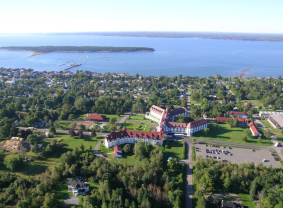
II. Natural Geography
₋ Saint Andrews (2016 population: 1,786) is a town in Charlotte Counrty, New Brunswick, Canada. The historic town is well preserved, and is a national historic site of Canada, bearing many characteristics of a typical 18th century British colonial settlement.
₋ Saint Andrews is at the southern tip of a peninsula, extending into Passamaquoddy Bay. The waterfront faces Saint Andrews Harbour and the Western Channel, which is formed by Navy Island. The harbour is at the mouth of the St. Croix River.
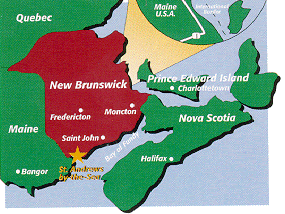
₋ The town is directly opposite the community of Robbinston, Maine, 2 kilometres to the we st across the river mouth, and 53 km by road.
₋ Ministers Island is east of the town and is accessible by road at low tide only.
₋ Transportation
Despite its proximity to the Canada–United States border, the nearest border crossings are 30 km away at St. Stephen or via a ferry service at Deer Island.
The only way into or out of Saint Andrews by land is via Route 127, which runs directly through the town. It meets Route 1 on either end of the town.
III. ECONOMY
₋The average salary in St Andrews, New Brunswick is C$14.64. Trends in wages decreased by -100.0 percent in Q1 2020. The cost of living in St Andrews, New Brunswick is 100 percent higher than the national average.
₋ Website: https://www.payscale.com/research/CA/Location=St-Andrews-New-Brunswick/Salary
IV. Industrial Characteristics
₋ Saint Andrews’ economy generally clusters in three areas: tourism, science/education, and health-care. Tourism includes retail (13% of employed population), accommodation/food (10%), and arts/cultural (4%) industries. The tourism sector is predominately seasonal, with many businesses only being open from MayOctober. Science/professional (10%) is a yearround industry that brings highly educated researchers from across the country to Saint Andrews and is focused on marine sciences. Education (13%) includes elementary, secondary, and post-secondary schools. Health care (10%) is a growing industry that is largely fueled by an aging populations and inmigration of retirees. Saint Andrews has a fairly diverse economy with many assets, but also challenges like a lack of year-round employment and an aging population.
₋ Tourism has been a key aspect of the economy for many years and shows signs of more growth, at least in the summer months. World class accommodations and dining at the Algonquin Lodge and smaller inns, active and passive recreation like golf and whalewatching, and picturesque heritage homes draw increasing visitors every year. Kingsbrae Gardens, a popular tourist site, saw 32,949 visitors in 2017, an increase of 15% from 2016. Other tourism assets include a location near the US border, nearby natural splendor, and a thriving arts scene. While tourism is a crucial economic driver, there are challenges that should be addressed. During tourist season residents face difficulties with traffic and parking, employment in Saint Andrews is highly seasonal, and an aging population will have difficulty supporting tourism in the near future. Rather than increasing tourism in the summer, the focus should be on increasing tourism in the shoulder seasons (Mar.-Apr., Oct.-Dec.) Some businesses have reported success in this area, mostly attracting more local tourists. While not restricted to tourism or even the economy, population stabilization through youth retention and immigration will be very important moving forward and should be addressed in the plan. Tourism based economic development can also be a victim of its own success. Few want to go to that place that is overrun by other tourists, where tour buses clog the street, and you can’t find parking. These are already issues for residents and a municipal plan needs to balance the needs of all. The above are issues better addressed in the Infrastructure section, but efforts should be made to encourage to spread tourism throughout the year.
₋ What sets Saint Andrews apart from many other tourist havens is a thriving scientific research and education sector. The nearby and expanding aquaculture industry feeds the need for a robust understanding of marine environments that Saint Andrews’ scientific institutions provide. The Department of Fisheries and Oceans Biological Station, Huntsman Marine Center, the Atlantic Salmon Federation, and the Conservation Council of New Brunswick’s Marine Conservation office use Saint Andrews as a base and the infrastructure and expertise they have developed is fertile ground for further growth. The Saint Andrews NBCC campus provides a more generalized learning environment but has specialties in aquaculture management, hospitality, and health-care. Increased linkages to employment opportunities in Saint Andrews could be an important aspect of retaining youth and immigrants. Prince Edward Island, the fastest growing province in Atlantic Canada, has managed to develop a strong science-based economy. PEI has created a business climate conducive to scientific industry and has set up an organization (PEI BioAlliance ) to attract, support, and help staff companies. This active approach to recruiting companies and people has almost certainly played a role in PEI’s population growth. Knowledge/Technology/Research Park One opportunity to capitalize on the assets that already exist would be the creation of a knowledge park. Knowledge parks became popular in the 1950’s as a way to apply research coming out of educational institutions to business and technological innovation. Now most cities and towns with universities have one. Some specialize in one cluster; others provide space for diverse scientific applications. Proponents claim that these are a means to economic development, but there are caveats as well. Development of knowledge parks is often subsidized through municipal tax breaks and there is not always the expected return on that investment. These are certainly not if-you-build-it-they-will-come panaceas, but if there are already assets in place, knowledge parks can be a boon to communities.
₋ Website: https://www.townofsaintandrews.ca/wp-content/uploads/2019/07/backgroundreportadopted1.pdf
V. Attractions
1. St. Andrews Blockhouse National Historic Site
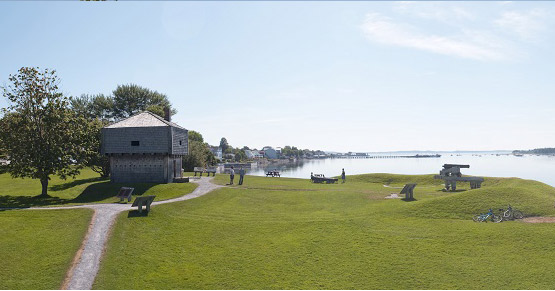
₋ Step back to a time when southern friends became feared enemies, and clashes between the US and Great Britain penetrated borders during the War of 1812. Located on New Brunswick’s southern shore. St. Andrews Blockhouse was built by townspeople to protect them against American privateers and military.
₋ Website: https://www.pc.gc.ca/en/lhn-nhs/nb/standrews
₋ Phone (June to August)
506-529-4270
₋ Phone (September to May)
506-636-4011
₋ Email
pc.martello.pc@canada.ca
2. Huntsman Marine Science Centre
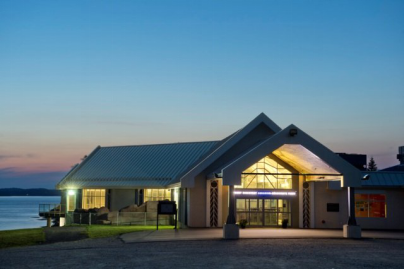
₋ The Huntsman Marine Science Centre (acronym: HMSC; previously Huntsman Marine Laboratory) is located on Lower Campus Road in St. Andrews, New Brunswick, Canada. The centre is a membership-driven, nonprofit organization founded by a consortium of universities with the support of the National Research Council of Canada, Fisheries and Oceans Canada, and the New Brunswick Department of Fisheries and Aquaculture. Mr. Chris Bridger is the Executive Director; Dr. W.B. Scott is senior scientist emeritus. It is named in honor of Archibald Gowanlock Huntsman, director of the St. Andrews Biological Station that adjoins the centre, who stimulated fishery research in the region.
₋ It was founded in 1969 by a consortium of universities in Eastern Canada, and several government departments, who pooled their resources in order to provide field research and teaching facilities that would complement their programs in marine biology and oceanography. The Huntsman Marine Laboratory was established on 20 acres (8.1 ha) of land that was provided by Fisheries and Oceans Canada, and included two residential buildings that were called the Ambridge Estate. The government assisted with the purchase of the Sir Thomas Tait Estate which included another 50 acres, and the large Anderson House, which provides accommodation for visiting students. A public aquarium opened in 1972. The name was changed to Huntsman Marine Science Centre in 1987. In 1991 and again in 1999, the HMSC was awarded the Gulf of Maine Visionary Award.
₋ Address: 1 Lower Campus Rd, St. Andrews, NB E5B 2L7
₋ Phone: (506) 529-1200
₋ Website: https://www.huntsmanmarine.ca/
3. Ross Memorial Museum
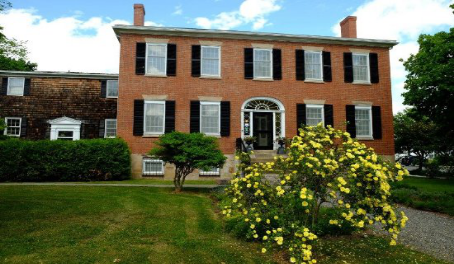
₋ The Ross Memorial Museum is a personal decorative arts collection displayed in a fine early 19th-century house in the National Historic District of St. Andrews, New Brunswick, Canada. The museum and collection was left to the town of St. Andrews by its benefactors, Sarah Juliette Ross and her husband, Henry Phipps Ross.
₋ Henry Phipps Ross and his wife, Sarah Juliette Ross were Americans who visited St. Andrews in 1902 for a picnic and bought a house and estate in nearby Chamcook which they called Rossmont. Primarily used as a summer house, they spent several months of every year at Rossmont until 1945.
₋ The Rosses were serious collectors and acquired numerous pieces of early 19th century New Brunswick furniture made by such cabinetmakers as Thomas Nisbet, Alexander Lawrence, Robert Chillas, John and Jonas Howe, Albert Lordly and Alban Emery.
₋ Adventurous travellers, they took one of the first ‘around the world’ cruises in 1925, visited Asia and Africa in the 1930s and drove from New Brunswick to California in 1919. On all these trips they collected local artefacts which they took back to their home at Rossmont. Oriental carpets were a special interest of the Rosses and the museum’s collection is quite extensive.
₋ The Rosses had many artist friends in California where they lived for some time. The work of artists such as Mary Curtis Richardson, William Raymond Eaton, William Posey Silva, and Edith Maguire are well represented. George Horne Russell, the Montreal artist who had a studio in St. Andrews, was a close friend and many of his paintings are in the collection.
₋ In 1938, the Rosses purchased Chestnut Hall in the centre of St. Andrews. They never lived in the substantial brick Georgian house built by the Hon. Harris Hatch in 1824 but bought it with the sole intention of it becoming a museum of their collection.
₋ In 1945, Juliette and Henry Ross both died within a few days of each other. In their wills they provided for many friends and staff, and when those bequests ran their course the second part of the will came into effect. This resulted in the Ross Memorial Museum being opened in 1980, the Ross Memorial Library being built behind the museum, and the Ross Memorial Wing being built on the hospital in nearby St. Stephen.
₋ Address: 188 Montague St, St. Andrews, NB E5B 1J2
₋ Opened: 1980
₋ Phone: (506) 529-5124
₋ Website: https://rossmemorialmuseum.ca/
VI. History
₋ At the eastern end the town is a midden, a pile of shells and other refuse that accumulated over two thousand years due to year-round activity of the indigenous peoples in Canada. It is today a provincial heritage site.
₋ The site of the town was named Qunnnoskwamk'ook, meaning long gravel bar in the Malecite-Passamaquoddy language. The present name was given by a French missionary who landed at the site on Saint Andrew's Day. The site was settled in 1783 by United Empire Loyalists, and the town's street grid, designed by Charles Morris, was laid out at that time and persists today. Except for the shoreline Water Street, all street names have royal or colonial associations. Also typical of British colonial settlement of the time are the defensive sites, public spaces, and delineation of the town.
₋ Between 1820 and 1860, the port of Saint Andrews welcomed Irish immigrants. They were first quarantined at Hospital Island, in Passamaquoddy Bay. At the 1851 census, more than 50% of the town's population had been born in Ireland.
₋ The Pendlebury Lighthouse, also known as the St. Andrews North Point Lighthouse, was built in 1833 at the tip of the peninsula. It was deactivated in 1938, and has since been restored and registered as a Canadian historic place.
₋ In 1840, the Charlotte County Court House was built, and is still in use.
₋ In the late 1800s and early 1900s St Andrews became a seaside resort for people from Montreal and Boston seeking to escape the summer heat. The town's first seaside hotel, the Argyll, opened in 1881 followed in 1889 by The Algonquin, a resort on a hill overlooking the town, making Saint Andrews Canada's first seaside resort. The Argyll burned down in 1892 and was never rebuilt and the Algonquin burned in 1914 but was rebuilt one year later. The lifestyle of wealthy summer visitors is commemorated at the Ross Memorial Museum.
₋ A federal marine research facility, the St. Andrews Biological Station, was established in 1908. and the Huntsman Marine Science Centre in 1969.
₋ The town, having flourished in the early 1800s, and having seen little development since then, nor modern industrial activity, is well preserved. In 1998 it was designated a national historic site.
VII. Other Information
₋ Transportation
₋ There are 39.46 km of public roads in Saint Andrews with 3.7 of those being the provincially maintained Highway 127 (Bayview Dr. and Mowat Dr.) RuralLynx offers daily bus service east to Saint John and west to St. Stephen (and on to Bangor, Maine). Pickup/Drop-off is available at Cummings Convenience and the NBCC campusi . Charlotte Dial-a-Ride links those without access to personal transportation to volunteer drivers. Rides must be pre-arranged, within the county, and are available Monday-Friday, 9 a.m.-5 p.m. Members pay a 60$ fee in addition to ride fees which typically range from 8$-20$ round trip. Dial-a-Ride is most commonly used for drives to and from work and medical appointmentsii . Because of its coastal location Saint Andrews can be accessed by boat through its wharf. Operated by the Town Wharfinger, the wharf is used regularly during tourist season by whalewatching boats, but can still accommodate private vessels. Those docking for less than a day pay a 10$ fee. Cycling is a popular recreational activity as well as a reasonable share of commuting traffic. Besides the Van Horne Trail, there is no cycling infrastructure (i.e. bike lanes). Cycling advocates have a long list of infrastructure improvements that could make Saint Andrews a cycling destination:
Signage delineating bike corridors
Bike lanes, ideally separated from traffic
Repair stations along the Van Horne Trail
₋ More places to lock ones bike including indoor storage/lockers While these improvements may be costly, advocates argue that they and other active transportation measures (more sidewalks, walk/wheel to school/work days) are an investment in the population’s health, part of climate change mitigation, and a form of economic development. Parking on Water St. has long proved a vexing issue for Saint Andrews. As the main commercial and tourist strip, lots of people want to be here, but there aren’t the parking spaces to accommodate all of those people. Almost half of the business owners in the BIA believe the lack of parking effects them negatively. Delivery trucks have nowhere out of the way to park and end up blocking an entire lane during the middle of the day. However, businesses need to be able to receive goods and given truck routing, it is not feasible to only allow deliveries before a certain hour. 17 New Policy Directions
₋ A solution to parking issues is obviously needed. Potential solutions include painting parking lines on Water St. so parking is more efficient, having enforceable time limits (e.g. 2 hours), encouraging business owners/employees to park on side streets, purchasing private lots for public use, or using available land on the outskirts of town to create parking and providing shuttle service. This final option would almost certainly not generate revenue and would have to be seen as a public service.
₋ wy implementing active transportation principles, the Town would be working towards its goals of having a healthy population, mitigating climate change, and economic development.
₋ Water Supply and Distribution
₋ Saint Andrews’ water is supplied from Chamcook Lake, roughly 3.5 km northwest of the municipal boundary. There is community concern over this water supply and its safety, especially given findings of blue-green algae over the last several years. Watermains serve the downtown area bordered by Chandler Ln., Charles St., Water St., and Prince of Wales St. The Algonquin Golf Course, Joe’s Point Rd., and areas branching off Thomas Rd. and Bayview Dr. are also serviced by the municipal water supply. Developments outside the serviced area may drill a well. Because Chamcook Lake is outside Town boundaries there is little the Town can do to protect its water source. The lake is managed by the Province of New Brunswick, but there is private development along its shores and there is concern that septic tanks and motorized boats may be affecting water quality. Bluegreen algae, which can produce toxic cyanobacteria, have been reported in the lake over the years. Despite this, the Town’s water supply has yet to show signs of contamination. Rising water temperatures are a factor in algal blooms and so with climate change leading to rising water temperatures, future monitoring of the lake is imperative. New Policy Directions
Water quality both at Chamcook and post-treatment should continue to be monitored.
A new water source should be investigated
Whatever source the town is using should be secured (controlled by the town)
₋ Sanitary Sewer Collection
₋ Sanitary sewer collection serves much the same area as municipal water services, the area bounded by Chandler Ln., Charles St., Water St., and Prince of Wales St. with extensions along Mowat Dr., Indian Point Rd., and areas branching off Dianna St. and from Thomas Ave. to Brandy Cove Rd. New developments in unserviced areas can implement on-site septic systems. There are six wastewater pumping stations that work with gravity sanitary sewers to bring raw sewage to a settling lagoon on Indian Point Rd. Primary treatment takes place here before discharge into Passamaquoddy Bay. No issues 18 have been identified with capacity or negative environmental effects. Extreme storm surges have been known to cause backflow of sewage and homeowners have been encouraged to install backflow valves. d. Storm Sewer System The storm sewer system is less developed then water or sanitary sewer pipes and exists almost entirely within the town plat. Harriet St., Queen St., King St., and portions of Ernest St., Water St., and Carleton St. as well as minor extensions from these into nearby roads make up the majority of the system. The Champlain subdivision and a small section of Mowat Ave. have storm sewers but they are not connected to the rest of the system. Other areas of town are serviced by ditches and culverts. New Policy Directions
Climate change is leading to increased and higher volume storm surges. The storm sewer system should continue to be updated and improved to meet increased needs. Where possible, new developments should strive to produce zero net new stormwater runoff.
₋ Police Services
₋ The Saint Andrews RCMP detachment consists of three full-time officers. They deal with civil, criminal, and moving traffic violations. RCMP headquarters for Charlotte County are based out of St. George. For a town the size of Saint Andrews, services are adequate although there is some concern among residents over drug use, speeding cars, and skateboarding. Skateboarding is seen as such a pervasive issue that a recent by-law prohibited the activity from the Historic Business District.
₋ Website: https://www.townofsaintandrews.ca/wp-content/uploads/2019/07/backgroundreportadopted1.pdf
VIII. Contact Information
₋ Government
Type: New Brunswick Municipality
Mayor: Doug Naish
₋ Address:
252 Water St, Unit C St Andrews, NB E5B-1B5
₋ Hours of Operation:
Monday – by appointment please call or email the office
Tuesday, Wednesday and Thursday 10:00 am – 3:00 pm
Friday – by appointment please call or the email office
₋ Email: StAndrewsChamber@outlook.com
₋ Phone: (506) 529-3555
